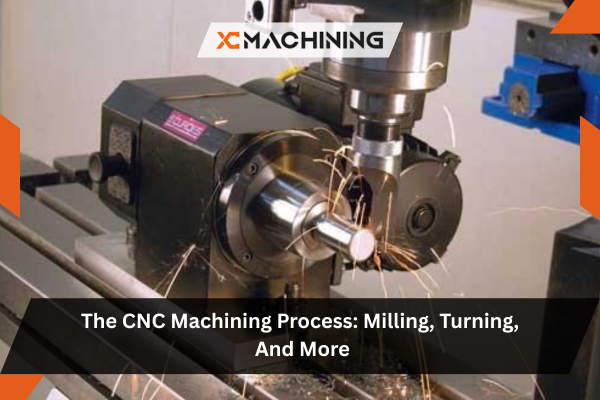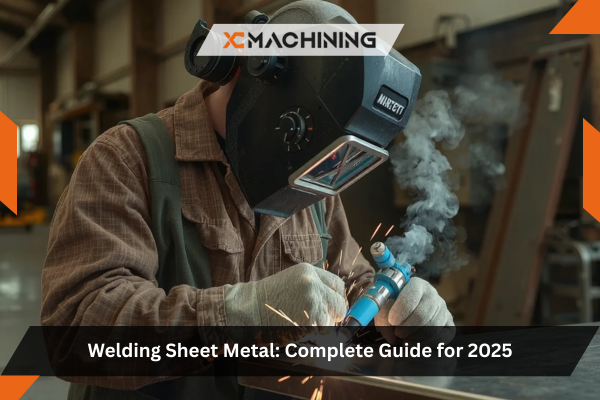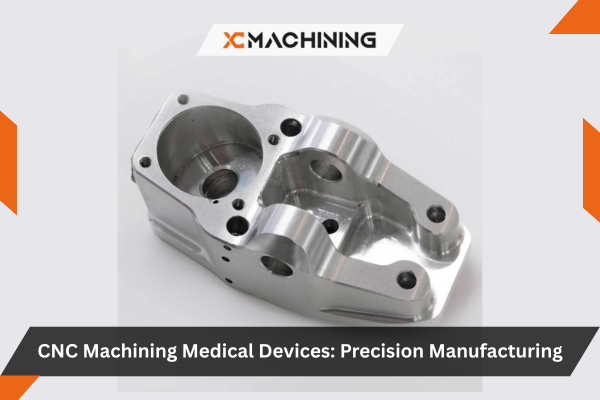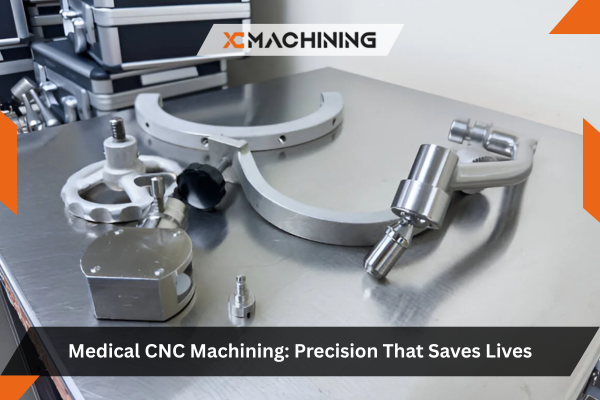Have you ever marveled at how machines can shape metal into precise parts, from car engine pieces to tiny smartphone frames? You might be scratching your head, wondering how it’s all done without countless human hours spent meticulously carving away material. For many projects, the CNC machining process takes the guesswork out of sculpting raw stock into functional products.
The CNC machining process involves automated machines like mills, lathes, routers, and grinders, all programmed to remove material with incredible control and consistency. In this blog, we’ll explore the basics of CNC machining, the major machine types (milling, turning, grinding, and more), and the factors that influence quality and speed.
The Evolution Of CNC Machining Process
In the early days, factories relied on mechanical or manually operated machines, which took time and skill to run. Then, computers took over. Automated machines(CNC Machining Process) soared in popularity by translating designs into coded instructions, delivering greater accuracy and speed than ever before.
Early Beginnings
Manufacturers first incorporated numerical controls using punch cards. Operators fed instructions to machines through physical media. Despite limited computing power, this was revolutionary. It let workers produce consistent parts in bulk, changing how factories approached milling, turning, and drilling tasks.
The Role Of Technology
Microprocessors and software took things to another level. People could modify designs directly on computers. CAM (Computer-Aided Manufacturing) software produced machine code automatically. Operators needed less guesswork. This shift lowered human error, improved repeatability, and boosted overall production output and quality.
Current Trends
Today, software-driven innovations include artificial intelligence for toolpath optimization, remote monitoring through the cloud, and hybrid systems that combine machining and 3D printing. These capabilities allow faster turnaround times, simpler design changes, and the ability to handle more complex geometric shapes.
Understanding CNC Programming
Without the right instructions, a machine doesn’t know how to shape your part. CNC machining process transforms your 2D or 3D designs into codes (often G-code) that tell the machine how to move.
Key Steps In CNC Programming:
- Import or create a CAD design.
- Use CAM software to generate toolpaths.
- Adjust speeds, feeds, and depths of cut for each tool.
- Simulate the job virtually to spot errors.
- Send the code to the CNC machine to start production.
Programming might sound technical, but modern software tools simplify the process. They let you tweak parameters easily, reducing guesswork and wasted materials. By refining code, you can optimize your CNC machining process for speed and accuracy.
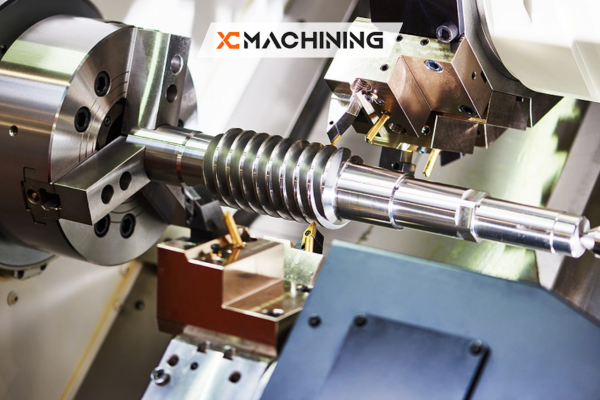
The Role Of CAD/CAM
CAD (Computer-Aided Design) is where you draw or import your part geometry, typically as a 3D model. CAM (Computer-Aided Manufacturing) takes that geometry and figures out the best way to cut material.
Fun Fact: Some CAM programs can even suggest cutting strategies based on the material selected and the required tolerances. This kind of “smart” software uses built-in libraries of cutting parameters.
By using CAD/CAM, you can quickly translate design ideas into usable instructions for CNC machining process. This synergy keeps production lines flexible and adaptable, letting you modify or refine parts before committing to expensive prototypes.
CNC Milling Basics
CNC Milling is one of the most common forms of the CNC machining process. Think of a spinning cutting tool moving across a fixed workpiece, shaving away material as it goes.
- Axis of Movement: Typical CNC mills operate on three axes (X, Y, Z), with more advanced machines offering 4 or 5 axes for complex contours.
- Tool Variety: End mills, face mills, and ball nose cutters allow different types of cuts—flat surfaces, detailed pockets, or sculpted edges.
- Best For: Milling is ideal for parts requiring shapes like slots, holes, and curved surfaces.
Keeping an eye on spindle speed, feed rate, and tool selection helps ensure a smooth, even cut. Plus, fixture setup how you secure your material—matters a lot. A poorly clamped piece can shift mid-cut and ruin your part.
CNC Turning Explained
Instead of the tool spinning, CNC turning sees the workpiece rotating while a cutting tool stays relatively still. This is perfect for cylindrical shapes like shafts or tubes.
- Lathe Operation: The chuck grips the material and spins it.
- Tool Movement: The tool moves along the length and diameter of the workpiece to shape it.
- Advantages: Turning can produce symmetrical parts quickly.
- Typical Parts: Think engine pistons, rods, or even decorative spindles.
This approach is especially handy when your design calls for rounded geometry or threaded elements. Many lathes now come with live tooling, letting you perform some milling tasks in the same setup.
CNC Grinding
CNC Grinding is more than just smoothing rough edges. It’s a precision finishing process. Abrasive wheels scrape off very fine chips of material, creating tight tolerances and refined finishes.
- Surface Grinders: Work on flat surfaces or profiles.
- Cylindrical Grinders: Tackle round shapes like rods or tubes.
- Centerless Grinders: Handle continuous tasks on rods, eliminating the need for a center or chuck.
Grinding might be slower than rough cutting, but it’s essential for components that need extremely precise surfaces or stringent dimensional requirements. Industries like aerospace or automotive often rely on grinding as a final step.
CNC Routing
A CNC router resembles a milling machine, but it’s typically used for softer materials like wood, plastic, or foam. You might see it in furniture-making, sign fabrication, or in artistic design studios.
Quick Tip: CNC routers usually operate at higher speeds with lighter cutting loads. This makes them perfect for shaping large sheets into intricate designs.
Routers can still handle some metals in certain setups, but they excel at quickly cutting out shapes in more pliable materials. Thanks to their table-like platform, routers can create big projects such as cabinet panels or decorative wall art with relative ease.
Common Materials For CNC Machining
Whether you’re milling, turning, or routing, the CNC machining process accommodates a wide range of materials:
- Metals: Aluminum, steel, titanium, and brass are popular choices for durability.
- Plastics: ABS, polycarbonate, and nylon work well for prototypes or lighter-duty parts.
- Composites: Carbon fiber or fiberglass sheets can be carefully machined with the right cutting speeds.
- Wood: Hardwoods, softwoods, and MDF are often milled or routed for custom pieces.
The key is to choose a material that suits both the function of your part and your CNC machining process capabilities. Overloading a router or using the wrong speeds can damage tools or materials.
Tools And Toolholders
If you want to produce parts efficiently, you’ll need the correct assortment of tools. End mills, drills, taps, and reamers each serve a specific role. Toolholders connect these cutting tools to the spindle, ensuring they remain stable and aligned.
Here’s a quick table summarizing some popular tools and their typical uses:
| Tool Type | Primary Use | Notes |
|---|---|---|
| End Mill | Milling flat surfaces, pockets, contours | Available in 2-, 3-, or 4-flute configurations |
| Ball Nose Cutter | Curved surfaces, 3D contours | Ideal for smoothing 3D shapes |
| Drill Bit | Hole creation | Various tip angles for different materials |
| Tap | Threading inside holes | Must match hole size for correct thread fit |
| Face Mill | Large flat areas, finishing | Offers wide cutting area for faster material removal |
When picking tools, consider factors like material hardness, spindle speed, and desired surface finish. The right combination leads to cleaner cuts and longer tool life.
Setting Up A CNC Shop
Starting a CNC machining process shop doesn’t require a massive factory space. Some hobbyists run small mills or routers in their garage. For professionals, dedicated manufacturing areas with multiple machines are the norm. Either way, here are a few considerations:
- Power Requirements: Larger machines need robust electrical setups.
- Ventilation: Milling metals generate chips and sometimes coolant mist.
- Floor Space: You need room for the machine footprint plus material storage.
- Software Licensing: CAD/CAM tools might need pricey subscriptions.
- Support Equipment: This could include air compressors, chip collectors, or even 3D printers for prototyping.
With careful planning, your CNC machining process can run smoothly, whether you’re building small prototypes or scaling up for production runs.
Quality And Inspection
Quality control is crucial to ensure each part meets design specs. Methods might include:
- Dimensional Checking: Using calipers, micrometers, or coordinate measuring machines (CMMs) to verify part dimensions.
- Surface Roughness Tests: Profilometers measure the smoothness of machined surfaces.
- Visual Inspections: Looking for burrs, scratches, or signs of tool wear.
- Statistical Process Control (SPC): Tracking measurements over time to spot trends or deviations.
Info Box: Routine inspections help catch issues early—like worn tools or misalignments—before they produce a batch of flawed parts.
By integrating frequent checks, shops maintain consistent part quality, reduce scrap, and keep customers happy.
Safety In CNC Machining
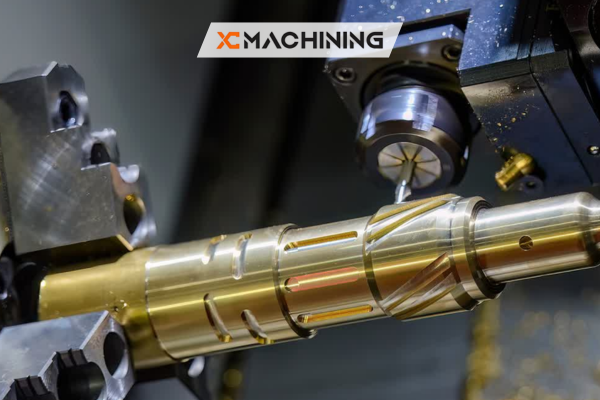
Automated CNC machining process can pose dangers if used improperly. Always follow these basics:
- Wear Protective Gear: Safety glasses, closed-toe shoes, and sometimes earplugs.
- Secure Workpieces: Improper clamping can cause parts to fly off mid-cut.
- Avoid Loose Clothing: Baggy sleeves or jewelry might snag in moving parts.
- Enable Machine Guards: Most CNC machining metal have protective enclosures. Keep them closed during operation.
- Check Tools: Cracked end mills or chipped inserts can break unexpectedly.
Safety measures protect both operators and equipment. It might feel tedious at times, but it’s far better than dealing with an injury or damaged machine.
Maintenance And Upkeep
A well-maintained CNC machining process is more accurate and lasts longer. Simple routines can help:
- Lubricate Bearings And Rails: Proper lubrication cuts down on friction.
- Clean Work Area: Chips or debris can clog coolant lines.
- Check Tool Alignment: A crooked tool mount means inaccurate cuts.
- Inspect Belts And Spindles: Worn belts can slip, affecting feed rates.
- Update Software: Keep firmware and CAM software current to avoid glitches.
Suggestion Box: If you own multiple machines, create a maintenance schedule. Consistent checks and preventive care often reveal small issues before they become expensive breakdowns.
Maintenance might feel like a chore, but it’s essential for producing top-quality parts day in and day out.
Emerging Trends In CNC Machining
Technology never stops evolving. The CNC machining process sees constant innovation:
- Hybrid Systems: Combining additive manufacturing (3D printing) and subtractive machining in one system.
- AI-Powered Optimization: Automated systems can adjust toolpaths based on sensor feedback, reducing wasted material.
- Cloud Connectivity: Machines send performance data to remote dashboards, helping operators track jobs even from afar.
- Nano Machining: Tiny, ultra-precise cuts are becoming more common in electronics or medical device production.
While not every shop needs the latest gear, staying aware of trends helps you anticipate where manufacturing is headed.
Troubleshooting Common Issues
Even the best setups can hit snags. Here are typical problems and possible fixes:
- Excessive Tool Wear: Check speeds and feeds and ensure you’re using the correct tool grade.
- Dimensional Errors: Recalibrate your machine or verify the fixturing method. Misalignments often lead to out-of-spec parts.
- Poor Surface Finish: Inspect for dull tools, insufficient coolant, or vibrations in the setup.
- Chatter: Adjust feed rates, spindle speeds, or work holding to dampen vibrations.
- Thermal Expansion: Large or extended cuts can heat metal, so consider coolant flow or let parts cool before measuring.
A little detective work, combined with consistent monitoring, usually resolves these headaches quickly.
Conclusion
The CNC machining process is a powerhouse in modern manufacturing, encompassing everything from milling and turning to specialized methods like grinding and routing. By automating tool movements through computer instructions, shops can produce parts with remarkable consistency and detail. Whether you’re a hobbyist in a small garage or an industrial factory pumping out thousands of parts, the CNC machining process stands ready to shape raw materials into practical (and sometimes stunning) creations.
If you’re new to this, don’t be intimidated. Start small with a simple machine or take advantage of user-friendly CAD/CAM software. Over time, you’ll see how investing in the right tools and maintaining a well-organized workspace can turn your design ideas into precision reality.
FAQs
Do I need special training to operate CNC machines?
While formal training helps, many operators learn through on-the-job practice and online tutorials. Understanding the basics of G-code and CNC machining process safety is crucial.
What’s the difference between milling and turning?
Milling rotates the cutting tool while the workpiece stays still. Turning rotates the workpiece while the cutting tool remains stationary. Each method suits different shapes.
Can I machine plastic on the same CNC mill that handles metal?
Yes, but you’ll need to adjust speeds and feeds. Some operators change cutting fluids or tool types to prevent melting or rough edges on plastic.
How do I pick the best material for my project?
It depends on your part’s function, stress requirements, and budget. Aluminum is lightweight and versatile, steel is stronger, and plastics are good for prototypes or lightweight parts.

